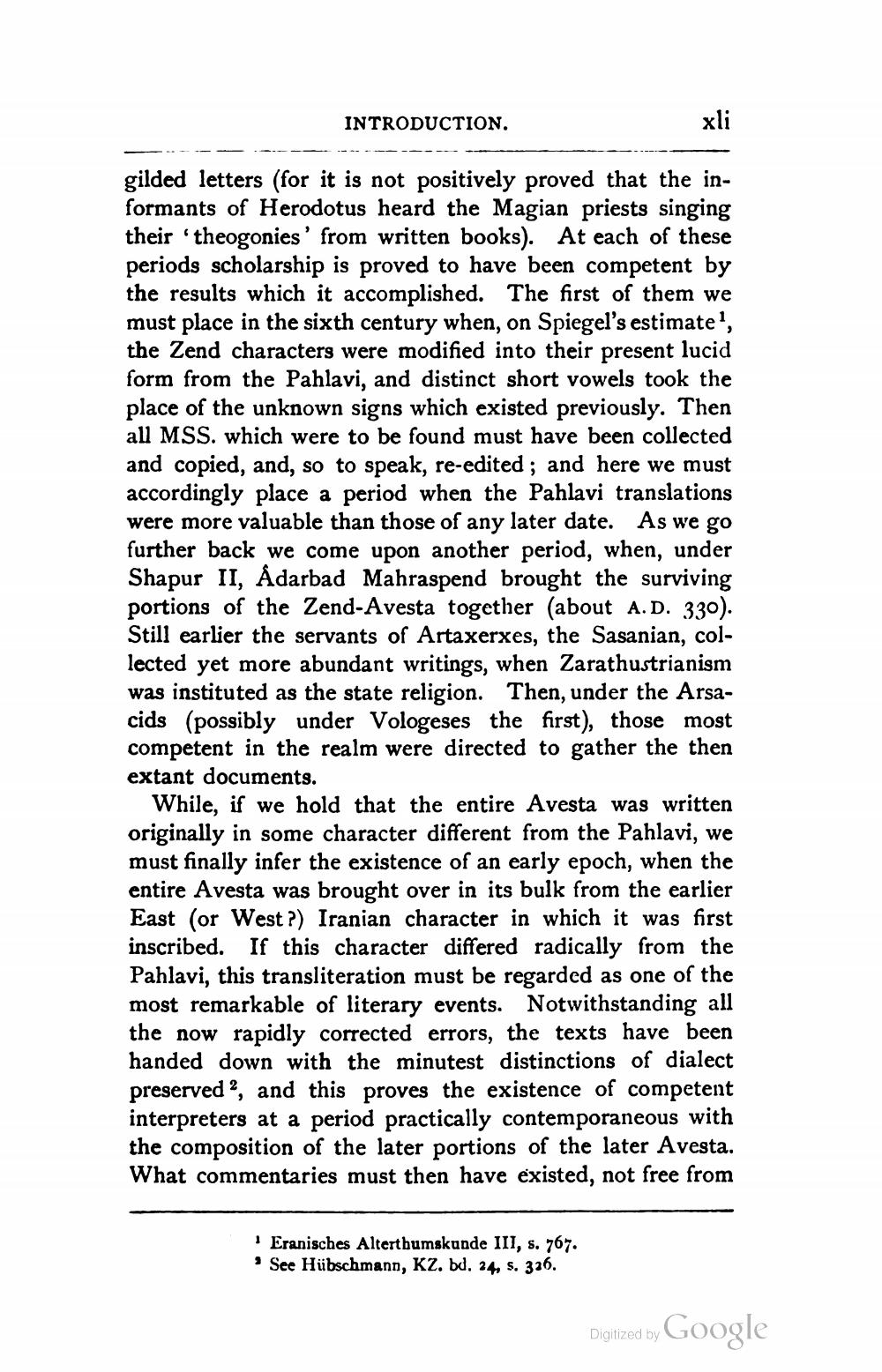________________
INTRODUCTION.
xli
gilded letters (for it is not positively proved that the informants of Herodotus heard the Magian priests singing their 'theogonies' from written books). At each of these periods scholarship is proved to have been competent by the results which it accomplished. The first of them we must place in the sixth century when, on Spiegel's estimate", the Zend characters were modified into their present lucid form from the Pahlavi, and distinct short vowels took the place of the unknown signs which existed previously. Then all MSS. which were to be found must have been collected and copied, and, so to speak, re-edited ; and here we must accordingly place a period when the Pahlavi translations were more valuable than those of any later date. As we go further back we come upon another period, when, under Shapur II, Adarbad Mahraspend brought the surviving portions of the Zend-Avesta together (about A.D. 330). Still earlier the servants of Artaxerxes, the Sasanian, collected yet more abundant writings, when Zarathustrianism was instituted as the state religion. Then, under the Arsacids (possibly under Vologeses the first), those most competent in the realm were directed to gather the then extant documents.
While, if we hold that the entire Avesta was written originally in some character different from the Pahlavi, we must finally infer the existence of an early epoch, when the entire Avesta was brought over in its bulk from the earlier East (or West ?) Iranian character in which it was first inscribed. If this character differed radically from the Pahlavi, this transliteration must be regarded as one of the most remarkable of literary events. Notwithstanding all the now rapidly corrected errors, the texts have been handed down with the minutest distinctions of dialect preserved ?, and this proves the existence of competent interpreters at a period practically contemporaneous with the composition of the later portions of the later Avesta. What commentaries must then have existed, not free from
Eranisches Alterthumskunde III, s. 767. · See Hübschmann, KZ. bd. 24, s. 326.
Digitized by
Digitized by Google




